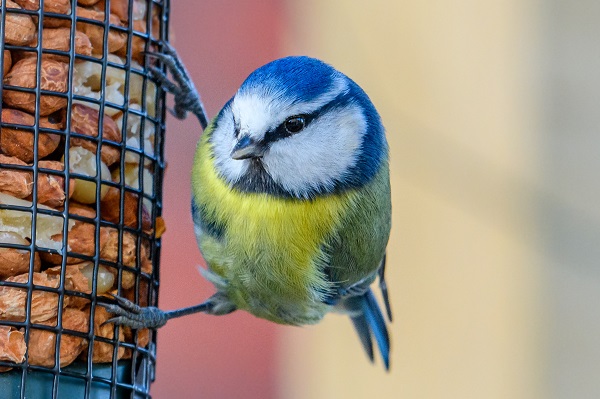
And what can we do to help?
Even though birds are descended from dinosaurs, they are warm blooded, which means when temperatures tumble, they battle to survive.
Happily, they are very good at it.
Unlike humans who can insulate themselves with turkey and mince pies, birds have to stay trim to be able to fly.
One trick they have is to slow down their metabolisms so that they don’t burn through their reserves on cold nights.
Small birds are also expert at finding places to hunker down, such as the crevices of trees behind loose bark or deep in a thick hedgerow.
When cold snaps, a bird can lose a big chunk of its body weight overnight, and it will need to find food the next day.
Here too some birds have a neat survival skill. When berries and seeds are plentiful, crows and tits among others squirrel away food for lean periods.
Some animals grow a thick winter coat but birds can’t afford that extra weight, so they go for a layer of light downy feathers – the soft warm ones we like in our pillows.
And as seen on many a Christmas card, birds can fluff up their feathers (and tuck their heads under their wings) to keep out Jack Frost.
Of course, some birds migrate to warmer places. The mammoth effort involved in those long journeys shows just what a challenge it is to survive for those who stay behind.
Here’s where we can help.
If you have nest boxes in your garden, leave them up as they can be a great bolthole for sheltering birds.
Bird feeders make a huge difference in winter.
After surviving a 16-hour winter night, a small bird may need to eat its own weight in food to get through the next one.
Here’s the RSPB’s run down on what type of food attracts what type of bird.
| Feed type | Birds attracted |
| Small seeds such as millet | House sparrows, dunnocks (hedge sparrows), finches, reed buntings, collared doves |
| Flaked maize | Blackbirds |
| Peanuts and sunflower seeds | Tits and greenfinches |
According to the RSPB, fat balls and other fat-based foods as well as live food such as mealworms are excellent winter food.
But you should always remove the nylon mesh bags that they are often sold in as it can trap and injure birds.
There is a recipe for making your own bird cake as well as lots of advice on the RSPB website.
It’s well worth reading to ensure you avoid some common mistakes that can be harmful to the birds you’re trying to help.
If you’ve never fed birds in your garden before, you might be quite surprised by the sheer number that will visit you.
They will travel long distances to gardens where experience tells them there is food.
Robins that have noisily strutted their stuff to chase off any invaders become tolerant of each other as the shared need to feed becomes a greater priority than protecting territory.
If you’re out in your garden, you may find a robin or blackbird close to your feet, especially if you’re digging and turning up worms.
In Britain, they have evolved to live closer to humans than they do in some countries where hunters trap them.
Surviving winter is undoubtedly tough for birds.
Helping them gives me a sense of wellbeing, and watching them flock to the feeders is a pleasurable spectacle to help us through the winter months too.
